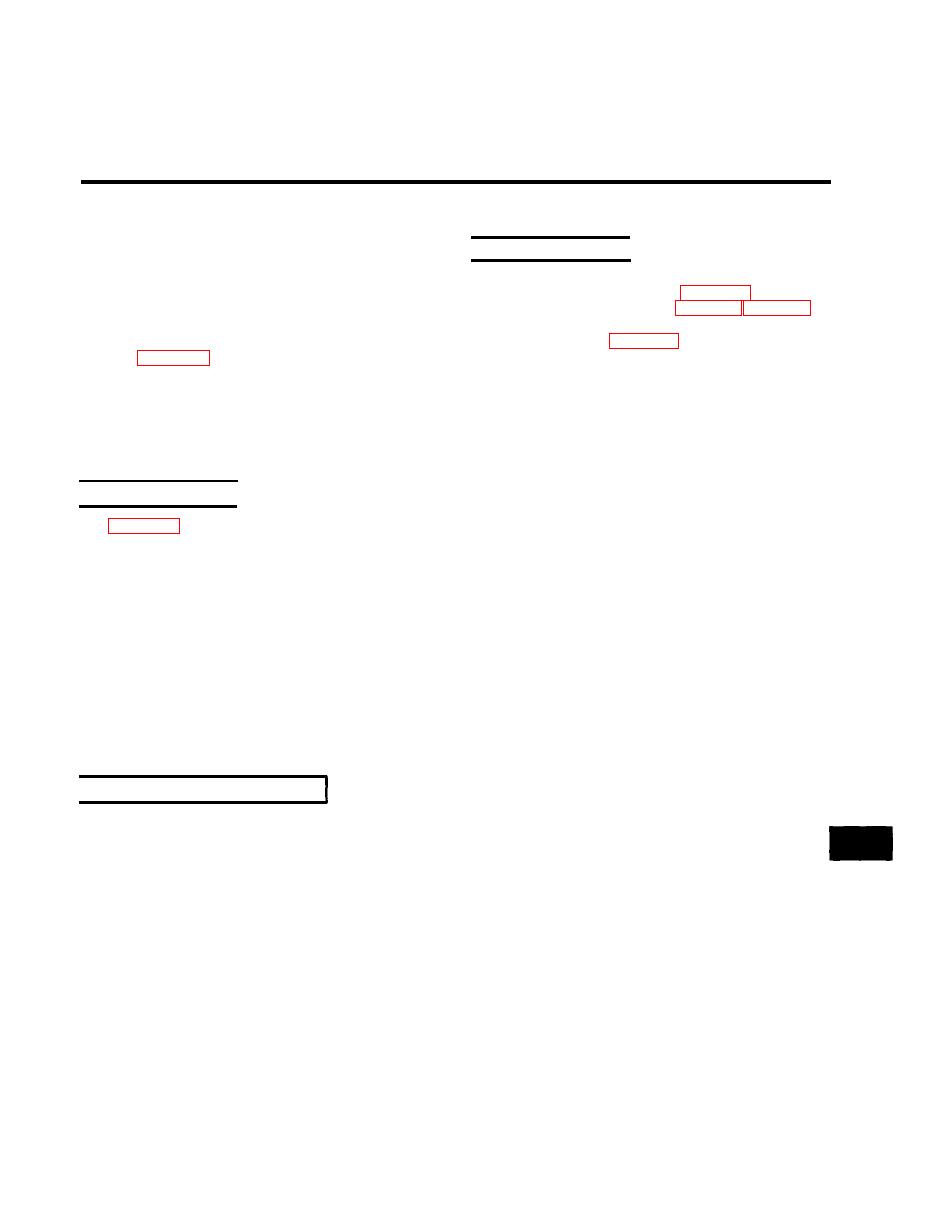 |
|||
|
|
|||
|
Page Title:
APPENDIX F ELECTRICAL AND HYDRAULIC DIAGRAMS |
|
||
| ||||||||||
|
|
 TM 10-3930-638-24&P
ELECTRICAL
AND
HYDRAULIC
DIAGRAMS
Section I. INTRODUCTION
F-2. DIAGRAMS
F-1
GENERAL
This appendix contains an electrical diagram and an
The hydraulic diagram is located in figures F-3 and F-4 and
hydraulic diagram. Also included in this appendix is a
the electrical diagram is located in figure F-5. Figure F-3
description of how to use the electrical diagram as an aid
shows the hydraulic oil flow when the various controls are
to troubleshooting (section 11). Section 111 contains the
in the neutral position. Figure F-4 shows the hydraulic oil
diagrams (figures F-3 through F-5).
flow when the controls are activated.
Section II. HOW TO USE ELECTRICAL SCHEMATIC AS AN AID
T O TROUBLESHOOTING
the transmission shift lever not fully engaged in park or
F - 3 . OVERVIEW
neutral.) Try to duplicate the trouble so you can be sure
you're on the right track.
a. Figure F-5. your Electrical Diagram. is designed to
help you understand the electrical circuits associated with
this vehicle. It is generally referred to as a "schematic" and
c. Check troubleshooting index for most likely cause,
uses "symbols" to represent real components. It is not
then identify the circuit that is malfunctioning.
drawn to scale (as in a blueprint) nor does the location of
the symbols represent actual location of components in the
d. Study the electrical schematic to learn which com-
vehicle. It is a simple "picture" of how the circuits and
ponents, harnesses, or wires could contribute to or cause
components are connected together.
the malfunction.
b. To quickly find a malfunction or trouble in the
electrical system and repair it requires an understanding of
NOTE
how the system operates and a method for checking it out.
"Troubleshooting" provides the "method" for check out
Remember, when tracing circuits on the elec-
procedures and your technical manual (Troubleshooting
trical schematic, that you should always start
tables and schematics) provides the "operating principles".
at the positive (+) side of the battery. Current
will flow outward from that point through the
circuits and return to the negative () side of
F-4. TROUBLESHOOTING
the battery by way of ground wires and the
vehicle frame.
Troubleshooting is the systematic (step-by-step) isolation
of a malfunction or trouble to the faulty component,
e. Make necessary tests and checks to isolate circuit or
harness connector/wire. It is a guide that helps develop a
component as outlined in the troubleshooting section of
routine or "way" of finding troubles in any electrical
this technical manual.
system or circuit. As you become more familiar with this
vehicle and gain experience, you will find ways to shorten
f. Make repairs, if you're sure. If not, continue to
these procedures and decrease down time. BEFORE you
isolate the malfunction, or ask for help from your foreman
attempt to make any repairs or checks, do the following:
or supervisor.
a. Find out how the system works under normal condi-
g. After repairs, make sure everything has been re-con-
tions and how to operate it.
netted and tightened.
b. Make sure the malfunction or trouble reported to
h. Make operational checks to verify that the system/
you "really" exists. ("Dead batteries" could end up as a
"failure to start" because of a faulty neutral start switch or
circuit is functioning properly again.
|
|
Privacy Statement - Press Release - Copyright Information. - Contact Us |